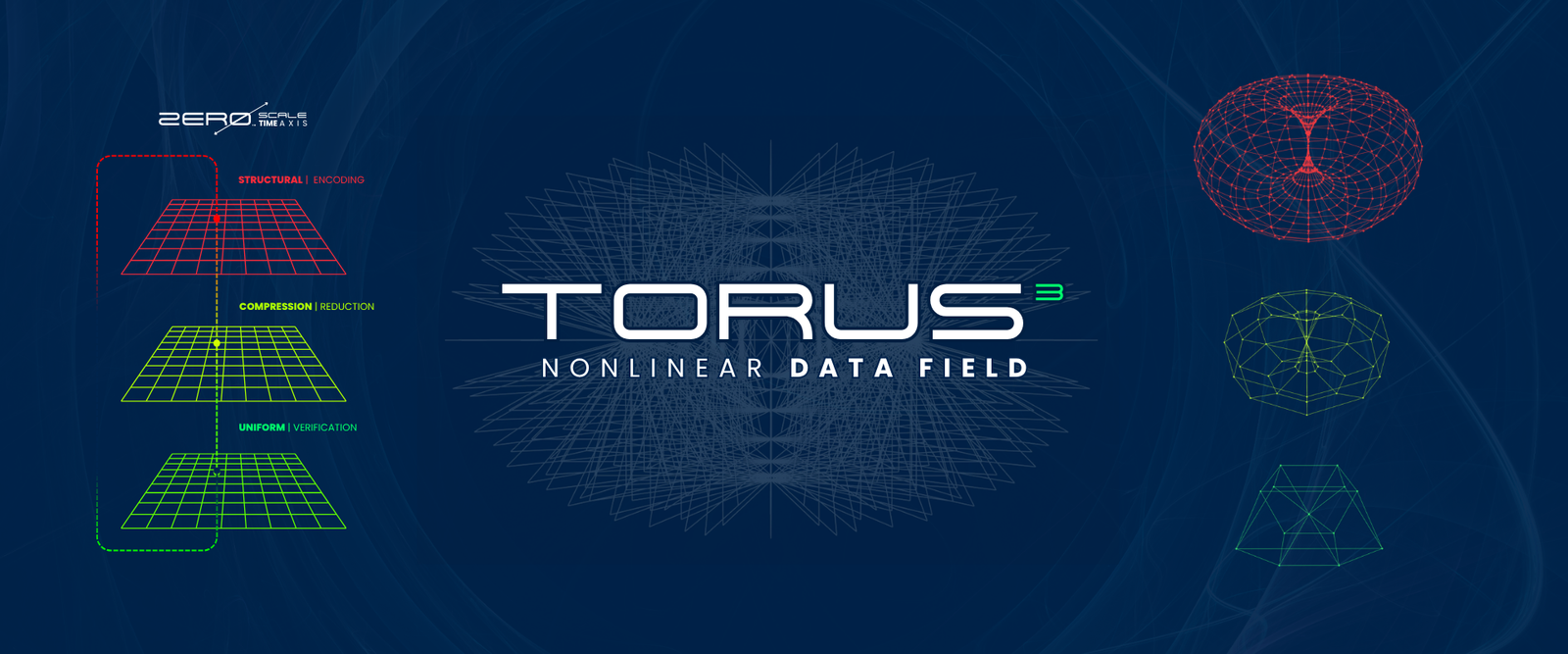
The Torus³ Nonlinear Data Field is a dynamic computational framework that organizes, transforms, and transmits information within a multidimensional toroidal lattice. Unlike conventional linear storage systems, the Torus³ topology encodes data into a continuously evolving, self-referential geometry. All coordinates are strategically connected through an entanglement logic, recursive symmetry, and scalar resonance aligned to a Phi (1.6183) convergence ratio. By leveraging a nonlinear structure that utilizes dynamic Möbius pathways, it enables efficient compression, precise reconstruction, and adaptive routing across scales and layers. Acting as both a storage medium and a logic engine, Torus³ maintains coherence and contextual alignment as data flows through nested transformations, cyclic permutations, and coordinate symmetries. These properties unlock a vector space modulation making it possible to dynamically compress or expand information and reconstruct it deterministically anywhere within the toroidal architecture.


Reflect(TOR)³ is the symmetry engine driving the Torus³ Nonlinear Data Field. Acting as a digital mirror, it leverages entanglement logic, fractal self-similarity, and coordinate-based transformations to maintain structural coherence. By embedding self-referential symmetries throughout every layer, Reflect(TOR)³ ensures data remains stable, reconstructable, and resilient across dynamic operations.

HyperStructures form the modular building blocks of the Hypermaze system. A HyperNode acts as the smallest functional unit, storing both data and geometric metadata. Multiple HyperNodes connect to form a HyperString, which captures directional relationships along a path. When HyperStrings are expanded and interlaced, they create a HyperPlane, a structured matrix that encodes information across two dimensions with embedded symmetries. Groups of HyperPlanes can be organized into a HyperGrid, enabling large-scale storage and pattern propagation across layers. Each Hyper Structure seamlessly transitions into the next, maintaining consistent coordinate references and deterministic rules so that data can always be reconstructed or traced back to its origin.

HyperStructures form the modular building blocks of the Hypermaze system. A HyperNode acts as the smallest functional unit, storing both data and geometric metadata. Multiple HyperNodes connect to form a HyperString, which captures directional relationships along a path. When HyperStrings are expanded and interlaced, they create a HyperPlane, a structured matrix that encodes information across two dimensions with embedded symmetries. Groups of HyperPlanes can be organized into a HyperGrid, enabling large-scale storage and pattern propagation across layers. Each Hyper Structure seamlessly transitions into the next, maintaining consistent coordinate references and deterministic rules so that data can always be reconstructed or traced back to its origin.

HyperStructures form the modular building blocks of the Hypermaze system. A HyperNode acts as the smallest functional unit, storing both data and geometric metadata. Multiple HyperNodes connect to form a HyperString, which captures directional relationships along a path. When HyperStrings are expanded and interlaced, they create a HyperPlane, a structured matrix that encodes information across two dimensions with embedded symmetries. Groups of HyperPlanes can be organized into a HyperGrid, enabling large-scale storage and pattern propagation across layers. Each Hyper Structure seamlessly transitions into the next, maintaining consistent coordinate references and deterministic rules so that data can always be reconstructed or traced back to its origin.
